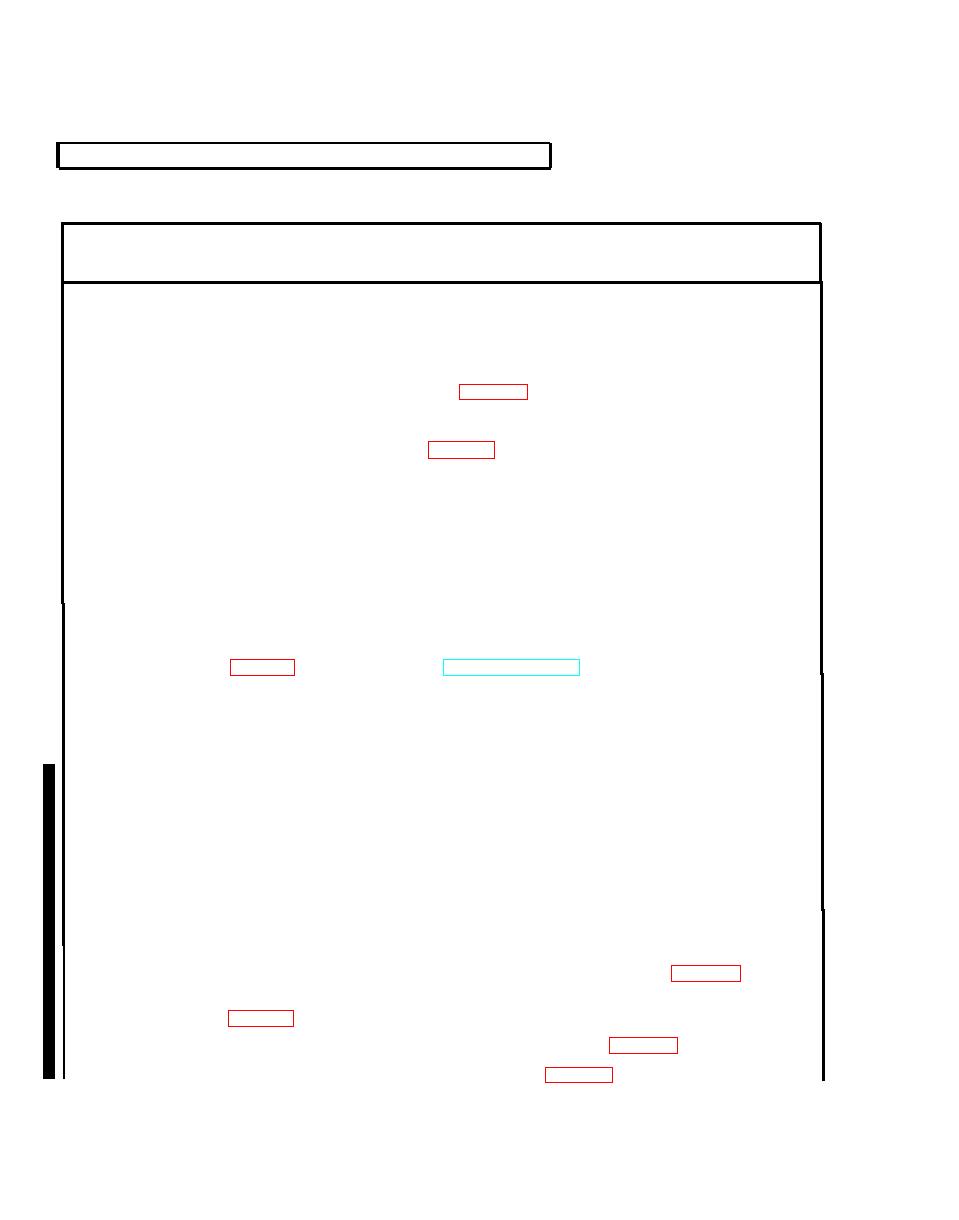 |
|||
|
|
|||
|
|
|||
| ||||||||||
|
|
 TM 9-2320-279-20-l
Troubleshooting Malfunctions (Cont)
2-15. TROUBLESHOOTING INSTRUCTIONS (CONT).
Table 2-9. Troubleshooting (Cont)
Malfunction
Test or Inspection
Corrective Action
ENGINE (CONT)
4. OVERHEATS (CONT).
Check thermostats. Remove thermostats (para 6-8 or 6-9).
Step 9.
Test thermostats (TM 750-254).
Replace defective thermostat (para 6-8 or 6-9).
Step 10.
If still overheating, notify the supervisor.
5. HIGH OIL CONSUMPTION.
NOTE
If engine uses less than 10 qt (9 L) of oil in 1000 mi (1 609 K) of operation, oil consumption
is normal.
Step 1.
Check oil filter, oil lines, engine covers, and oil pan for oil leaks,
Tighten leaking connections and covers and tighten or replace oil filter as necessary
Step 2.
Check water temperature gage for engine overheating.
If engine is overheating, refer to MALFUNCTION 4, OVERHEATS.
Step 3.
If high oil consumption continues, notify the supervisor.
Step 4.
Check crankcase pressure. Place manometer (57333-6) on vehicle so that meter is visible
during test. Remove oil dipstick and place hose (58639-2) of manometer at dipstick tube.
Open bleeder valve on manometer to level out manometer fluid. Adjust manometer so that
zero is placed along top portion of fluid line. Start engine and check crankcase pressure.
Crankcase pressure shall be 3.1 in. of water at 1800 rpm, 3.3 in. at 1950 rpm, and 3.5 in. at
2100 rpm.
If crankcase pressure is high, refer to MALFUNCTION 5.1 HIGH CRANKCASE
PRESSURE.
5.1. HIGH CRANKCASE PRESSURE,
Check engine oil breather for clogged element, obstruction, or damage (para 3-3).
Step 1.
Replace oil breather element, remove obstruction, or replace damaged parts
Step 2.
Check muffler and exhaust system for obstruction or damage (para 5-2).
Change 3
|
|
Privacy Statement - Press Release - Copyright Information. - Contact Us |